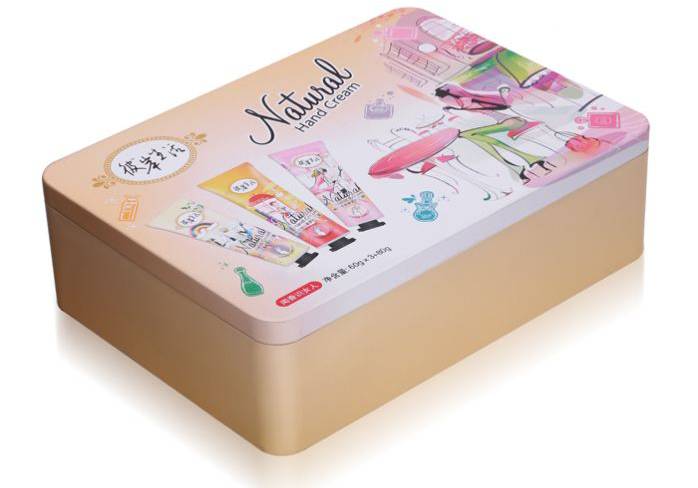Tinplate, also known as tinplate, is a common name for electroplated tin thin steel plates, abbreviated as SPTE in English. It refers to cold-rolled low-carbon thin steel plates or strips coated with commercial pure tin on both sides. Tin mainly serves to prevent corrosion and rust. It combines the strength and formability of steel with the corrosion resistance, solderability, and aesthetic appearance of tin in one material, possessing the characteristics of corrosion resistance, non toxicity, high strength, and good ductility. Due to the characteristics of tinplate, such as good ductility, antioxidant capacity, and the ability to be printed on it, it is not easily damaged and can be made into various shapes for convenient transportation, making it the first choice for packaging.
manufacturing process
1. Raw materials
a. Basic material
The raw materials we use include tinplate, frosted iron, galvanized iron, substrate iron (commonly known as black iron), and sometimes aluminum is also used. Accessories include copper wire, nitrogen gas, fully sprayed paint, liquefied gas, pallets, cardboard, strapping, wrapping film, etc. The most commonly used is tinplate. Generally, we use tinplate with a galvanized layer of 2.8/2.8 and a hardness of 2.5. The commonly used thickness is 0.19-0.35mm. Iron materials with a thickness exceeding this range cannot be printed. Matte iron is also commonly used. Generally, products without printing use frosted iron, which is not easy to scratch, but the price of frosted iron will be relatively expensive. Galvanized iron is generally used for products such as iron drums and is not frequently used. The thickness is generally 0.28mm and 0.30mm. Substrate iron is generally used for double-sided printing products
b.Tinplate structure
Rolled thin soft steel plate → continuous acid cleaning → continuous cold rolling → annealing → electrolytic cleaning → electroplating → melting → chemical treatment → oil coating → inspection → cutting → grading → packaging
C. The manufacturing process of tinplate
Rolled thin soft steel plate → continuous acid cleaning → continuous cold rolling → annealing → electrolytic cleaning → electroplating → melting → chemical treatment → oil coating → inspection → cutting → grading → packaging
2.Manufacturing Process
Color printed iron/coated iron → cutting plate → welding → internal and external coating of weld seam → necking and flanging → sealing → inspection of cans → full spraying → collection of cans → tape coating → film wrapping → finished product
There are various surface treatment methods for iron boxes, including white magnetic effect (coating the entire sheet of tinplate white), printing white (printing a part of the entire sheet of iron white while retaining the color of the tinplate in other areas), gloss oil (usually not printed inside or at the bottom of iron boxes or cans), gold oil (usually not printed inside or at the bottom of iron boxes or cans), and other effects such as gloss effect, matte effect, and matte printing (part of the iron box is coated with gloss oil and part is coated with matte oil). In addition, there are some special effects such as rubber oil, pearl oil, explosion oil, orange peel oil, cracking oil, etc. These effects are relatively expensive and rarely used.
4. Graphic printing technology
Four color printing: also known as offset printing, involves printing various patterns using the four basic colors of red, yellow, blue, and black in different proportions. If the customer has no special requirements, our quotation is for four-color printing.
Spot color printing is a special type of printing that is not produced by four-color printing, but by specially adjusted colors. Generally, customers will provide a spot color number, and the color should be compared with the Pantone book during printing. Generally, printing factories charge additional printing fees for printing spot colors.
Carving process: It is divided into 2D carving (flat carving) and 3D carving (three-dimensional carving). 2D carving is commonly used for logos and text, with the raised surface of the carving on the same horizontal line
Post time: Jul-30-2025






